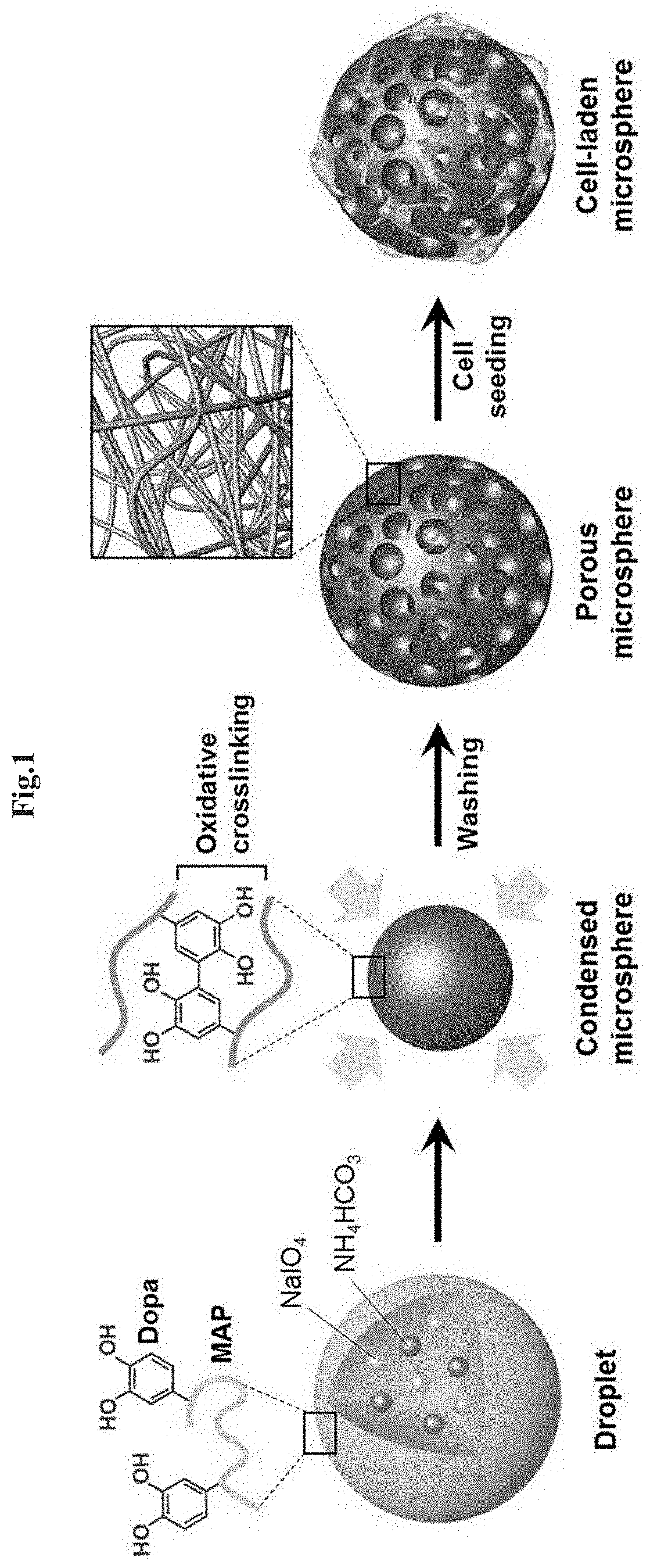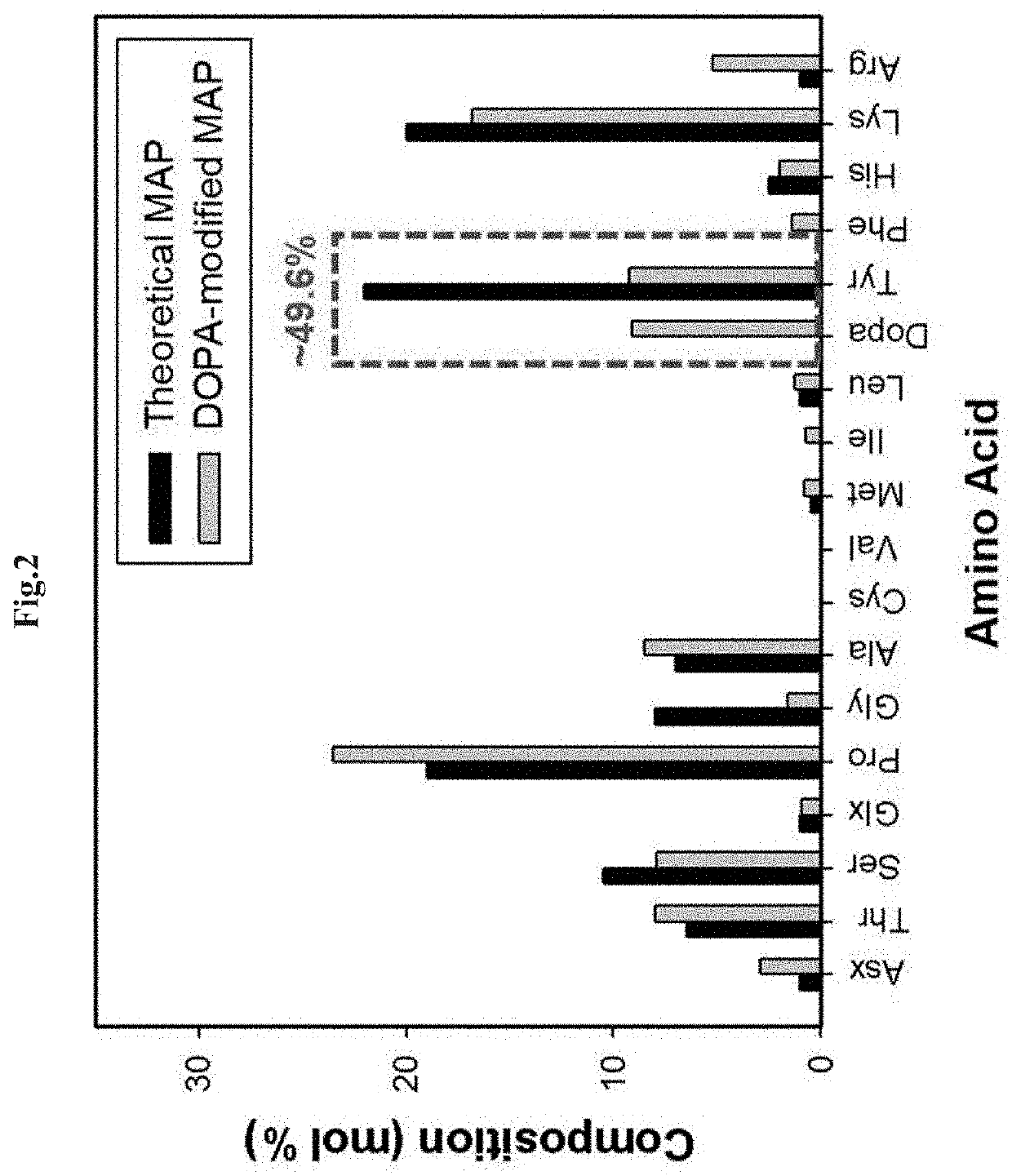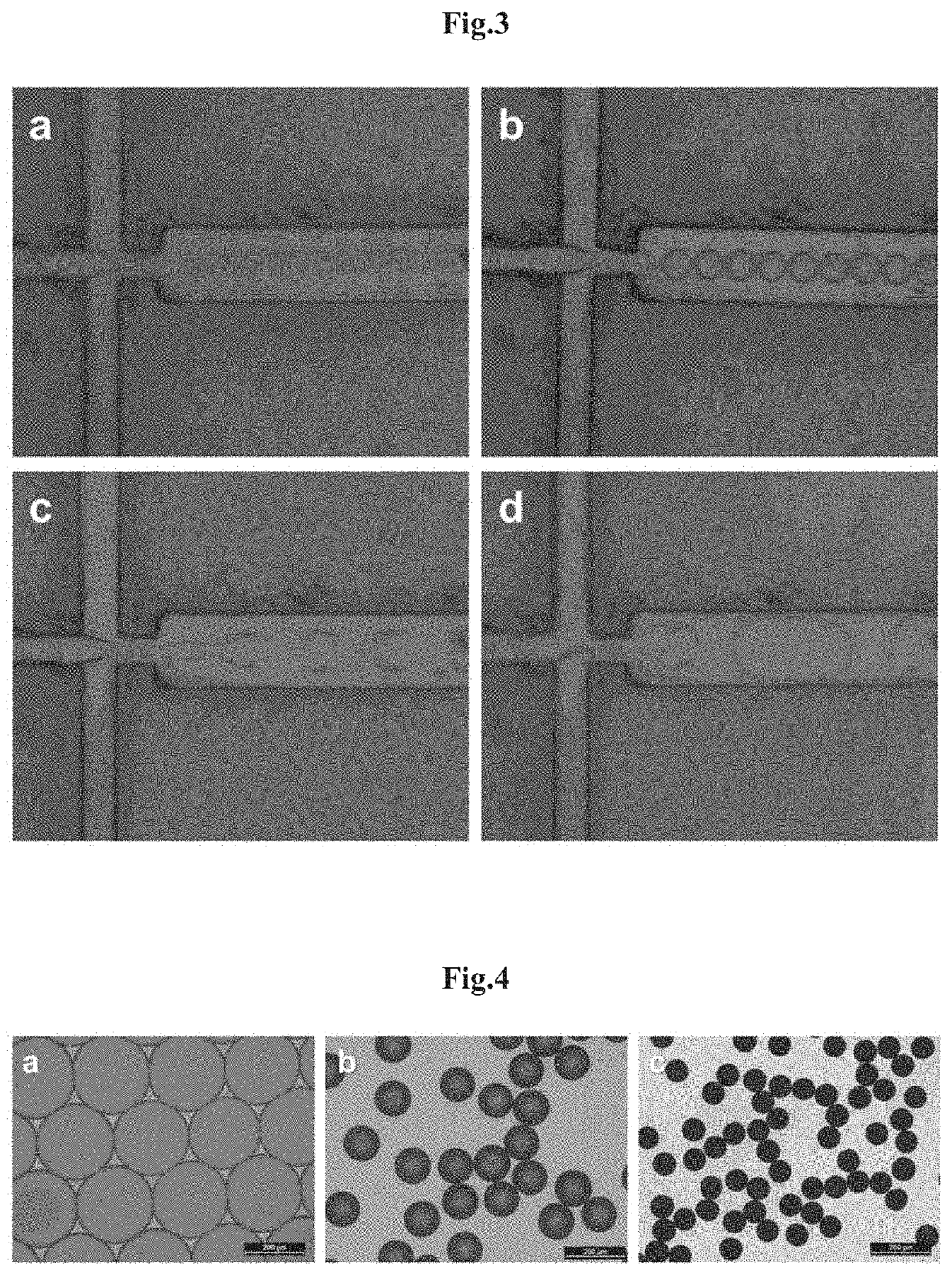Porous microspheres including mussel adhesive protein, and method for manufacturing same
a technology of adhesive protein and porous microsphere, which is applied in the direction of peptides, prostheses, peptide sources, etc., can solve the problems of low cell delivery efficiency, loss of cell viability or difficulty in controlling cell differentiation capacity, and low retention in the cell delivery environment, so as to efficiently deliver therapeutic stem cells
- Summary
- Abstract
- Description
- Claims
- Application Information
AI Technical Summary
Benefits of technology
Problems solved by technology
Method used
Image
Examples
example 1
on of Mussel Adhesive Protein-Based Porous Microsphere
[0092]In order to prepare porous microspheres based on mussel adhesive protein, the following experiments were carried out sequentially. A scheme of the overall experiment for preparing the porous microsphere of the present invention is shown in FIG. 1.
[0093]1-1. Preparation of Mussel Adhesive Protein fp-151
[0094]For decapeptide which repeats about 80 times in natural mussel adhesive protein fp-1 and consists of 10 amino acids to be expressed in E. coli, the mussel adhesive protein fp-1 variant composed of 6 decapeptides was prepared. Mgfp-5 gene (Genbank No. AAS00463 or AY521220) was inserted between two fp-1 variants to allow successful expression in E. coli. Subsequently, the mussel adhesive protein fp-151 was produced through purification process using acetic acid (D. S. Hwang et. al, Biomaterials 28, 3560-3568, 2007).
[0095]Specifically, in the amino acid sequence of fp-1 (Genbank No. Q27409 or S23760), a fp-1 variant (herein...
example 2
of Physical and Chemical Characterization of Mussel Adhesive Protein fp-151-Based Porous Microspheres
[0107]2-1. Analysis of FT-IR Spectroscopy of Porous Microsphere Surfaces
[0108]FT-IR spectroscopy analysis was performed to confirm the chemical bonding of the surface of the mussel adhesive protein-based porous microspheres (MAP-PMS) prepared in Example 1, and the results are shown in FIG. 8. As a comparison group, the modified fp-151 (MAP) and NaIO4-treated fp-151 (MAP+NaIO4) coated surfaces were used.
[0109]As shown in FIG. 8, it was confirmed that the porous microsphere had a peak similar to that of the fp-151 coated surface treated with NaIO4 at a wavelength of about 1240 cm−1 indicating C—O bonds in the catechol. As a result, it was confirmed that DOPA was changed into the DOPA-quinone by the oxidizing agent, allowing sufficient crosslinking progress to form microspheres.
[0110]2-2. Charge Measurement on Porous Microsphere Surfaces
[0111]In order to determine the charge of the surf...
example 3
ion of Applicability of Mussel Adhesive Protein fp-15-Based Porous Microspheres
[0116]In order to confirm the applicability of the porous microspheres, the porous microspheres were introduced into the syringe, and the release pattern of the porous microspheres was observed. In addition, a mold was used to prepare the porous microspheres in a cylindrical structure. The adhesion was confirmed on the skin surface of the animal tissue with alginate microspheres. The results are shown in FIGS. 12 to 15.
[0117]As shown in FIGS. 12 and 13, it was confirmed that the microspheres can be injected to the outside through the syringe while maintaining the form. In addition, as shown in FIG. 14, it was confirmed that the microspheres can be produced in a cylindrical structure by using a mold. Further, as shown in FIG. 15, when the microspheres are applied to the surface of the skin tissue of the animal through a syringe, it was confirmed that they are attached to the application site even after sev...
PUM
| Property | Measurement | Unit |
|---|---|---|
| porosity | aaaaa | aaaaa |
| diameter | aaaaa | aaaaa |
| diameter | aaaaa | aaaaa |
Abstract
Description
Claims
Application Information
 Login to View More
Login to View More - R&D
- Intellectual Property
- Life Sciences
- Materials
- Tech Scout
- Unparalleled Data Quality
- Higher Quality Content
- 60% Fewer Hallucinations
Browse by: Latest US Patents, China's latest patents, Technical Efficacy Thesaurus, Application Domain, Technology Topic, Popular Technical Reports.
© 2025 PatSnap. All rights reserved.Legal|Privacy policy|Modern Slavery Act Transparency Statement|Sitemap|About US| Contact US: help@patsnap.com



